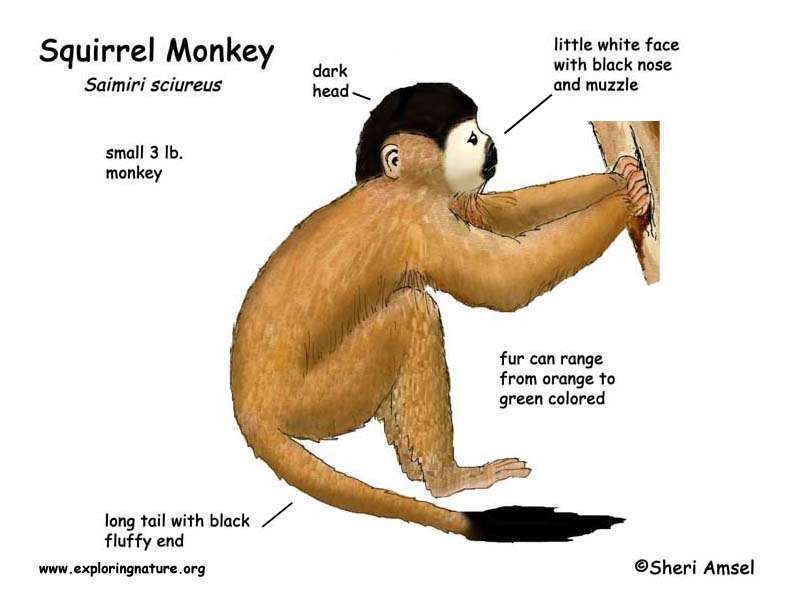

Squirrel monkeys live in rainforests from Costa Rica to Panama and down through central South America.
They spend their time high up in rain forest trees, only rarely coming down to the forest floor for food. They are often found near farms and wet areas, like rivers and streams.
Squirrel monkeys can be up to 30 inches long including their tail, but usually average about 18 inches in length and rarely weigh more than 3 pounds. Males are larger than females. Squirrel monkeys have little white faces with black heads and a black nose and mouth (muzzle). Their fur can be from orange to green in color.
They are active during the day (diurnal). They often live in groups of 30 or 40, mostly females with some males. Sometimes groups can number up to 100.
They eat mostly insects, but also ripe fruit.
Predators include snakes, falcons and wild cats.
Some, but not all the females in the group have a baby each year, delivering at about the same time. They are pregnant for 5.5 months (gestation). All the females help the mothers. Males do not help raise the young.
They can live for 20 years in the wild.
Kingdom: Animalia
Phylum: Chordata
Subphylum: Vertebrata
Class: Mammalia
Order: Primates
Suborder: Haplorrhini
Family: Cebidae
Subfamily: Saimiriinae
Genus: Saimiri
Species: Saimiri sciureus
When you research information you must cite the reference. Citing for websites is different from citing from books, magazines and periodicals. The style of citing shown here is from the MLA Style Citations (Modern Language Association).
When citing a WEBSITE the general format is as follows.
Author Last Name, First Name(s). "Title: Subtitle of Part of Web Page, if appropriate." Title: Subtitle: Section of Page if appropriate. Sponsoring/Publishing Agency, If Given. Additional significant descriptive information. Date of Electronic Publication or other Date, such as Last Updated. Day Month Year of access < URL >.
Amsel, Sheri. "Monkey (Squirrel)" Exploring Nature Educational Resource ©2005-2024. December 14, 2024
< http://www.exploringnature.org/db/view/Monkey-Squirrel >

